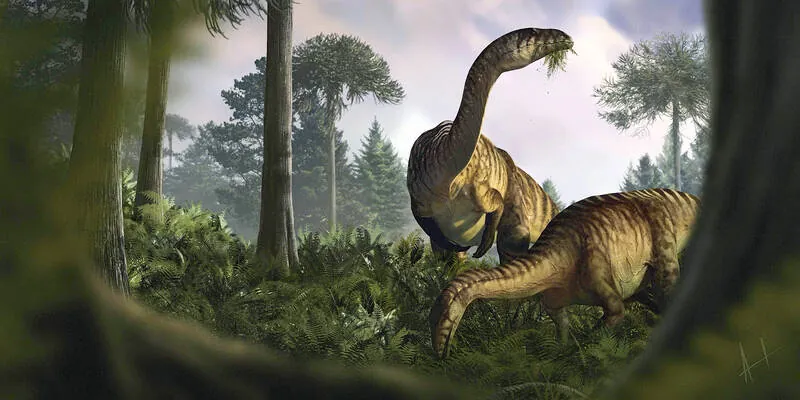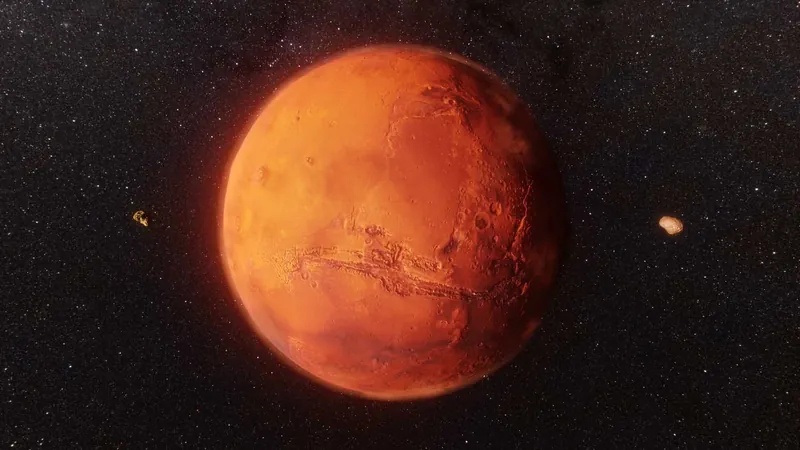
Uncovering the Secrets of Dinosaur Domination Through Fossilized Feces and Vomit!
2024-11-29
Author: Charlotte
Scientists have long been fascinated by the mysteries surrounding dinosaurs, especially their sudden disappearance from Earth 66 million years ago. Yet, their rise to dominance remains shrouded in intrigue—until now! A groundbreaking study released this week reveals how fossilized feces, vomit, and remnants of digested meals are shedding light on this ancient enigma.
The lead researcher, Martin Qvarnstrom from Uppsala University in Sweden, highlights the lack of knowledge regarding the dinosaurs' ascension. "While we know quite a bit about their extinction, their early success story is still a puzzle," he stated. Dinosaurs first emerged over 230 million years ago, but it wasn’t until the Jurassic Period—about 30 million years later—that they truly flourished.
What triggered this ascent? Scientists have debated this question for ages. To find answers, an international team analyzed over 500 "bromalites"—the fossilized remains of dinosaur waste—from excavation sites in Poland. By applying cutting-edge techniques like synchrotron microtomography, researchers generated detailed 3D images of these samples, revealing a diverse diet comprising insects, plants, fish, and even larger animals.
One exciting finding from this research is how the size of bromalites changed over time. They tripled in both average length and width, indicating a corresponding growth in the dinosaur populations responsible for them. Among the fossils studied, the Silesaurus, a distant ancestor of modern-day dinosaurs, was particularly noteworthy. Weighing only about 15 kilograms, the Silesaurus thrived by being omnivorous, allowing it to adapt quickly during environmental shifts, such as the rainy Carnian Pluvial Episode that led to the emergence of new plant species.
While large herbivores like Dicynodonts struggled with this new vegetation, the Silesaurus and future long-necked dinosaurs capitalized on the bountiful food source. This dietary versatility laid the foundation for the eventual rise of colossal plant-eating dinosaurs and the fierce carnivores that predated upon them.
The study does not conclusively answer the question of how dinosaurs came to rule the Earth, as competing theories exist. One theory points to physiological adaptations like upright posture, while another emphasizes environmental cataclysms that decimated competing species. However, the authors suggest that it may well be a combination of both—dinosaurs leveraging their evolutionary advantages amid changing climates and catastrophic events.
While acknowledging the creativity of this research, experts like Lawrence Tanner from Le Moyne College urge further investigation, noting its limited geographical focus. Expanding the study to other regions of the former supercontinent Pangea could provide new insights into the early dinosaurs' rise.
This fascinating journey through the world of ancient excrement not only heightens our understanding of dinosaur dominance but also piques interest in evolutionary biology as a whole. Keep your eyes peeled for the next chapter in dinosaur research—it’s bound to be just as exciting!









 Brasil (PT)
Brasil (PT)
 Canada (EN)
Canada (EN)
 Chile (ES)
Chile (ES)
 España (ES)
España (ES)
 France (FR)
France (FR)
 Hong Kong (EN)
Hong Kong (EN)
 Italia (IT)
Italia (IT)
 日本 (JA)
日本 (JA)
 Magyarország (HU)
Magyarország (HU)
 Norge (NO)
Norge (NO)
 Polska (PL)
Polska (PL)
 Schweiz (DE)
Schweiz (DE)
 Singapore (EN)
Singapore (EN)
 Sverige (SV)
Sverige (SV)
 Suomi (FI)
Suomi (FI)
 Türkiye (TR)
Türkiye (TR)